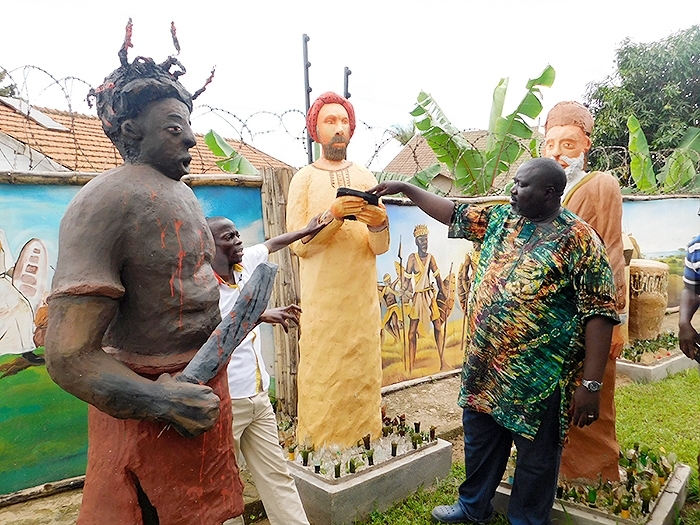As Uganda’s tourism industry continues to blossom, more trends and ideas from different sector players are developing by day. One of these is telling the Ugandan stories and history rather than relying on wildlife and nature of which the country has a smaller competitive advantage.
Many actors and scholars will reckon that while world over, especially in Europe, people are earning money from simply telling stories, African countries, which indeed have several interesting stories to tell are however not telling them.
Mr John Ssempebwa the former Deputy Chief Executive Officer at the Uganda Tourism Board says that since stories are unique to particular countries, they therefore not only earn the country money but can also keep the younger generations in the know about about the past.
“We have so many stories to tell and we must empower other people to tell their stories,” he says.
This is how he got the idea of setting up the Ssemagulu royal museum at the heart of Kampala in Mutundwe.
The museum brings to life stories from traditional to post independence Uganda. The museum’s emphasis is on the Kingdom of Buganda, the country’s biggest. For every single object here, a long interesting story of the past is attached to it.
The museum itself is a story ahead of the stories you could find here. Located on Mutundwe hill in Lubaga division of the capital Kampala, the museum sits on the land where a former slave market once sat when slave trade still prevailed. Jokingly, a guide could remind you that you are walking above bones and skulls of your ancestors who lost lives at this market.
The private museum’s name is also a story of its own. Sssemagulu, as the museum is known, was a royal seat of power before Juvenile King Mulondo took the throne in Ancient Buganda. When Mulondo became king after the death of his father, he could not sit on the Ssemagulu and earn respect from his subjects given his siz. His handlers therefore made for him a new seat big and high enough for everyone in the room to see him and it was named Namulondo. To this day, the seat of the Kabaka of Buganda is called Namulondo.
At the museum, stories are told starting from the cradle of the people of Buganda who are believed to have come from western Africa’s Cameroon highlands. The stories go on from how societies in Uganda mainly Buganda started out, detailing the political, religious, social and economics means of the people.
There is a chronological order of the kings of that time and what they were famous for. For one from central Uganda, you learn more about your own descent that you maybe didn’t know about.
This can range from where your descendants come from, how your clan came about and what its role in the kingdom is.
The story goes on to the arrival of Arabs, missionaries and explorers, through colonialism and to the point when Uganda attained independence in 1962. It takes between 5 to six hours of walking around the museum.
The story of the Uganda martyrs and what they stood for comes alive here too and so does Kabaka Mwanga’s stance, a man who is accused of killing them.
These stories are told with illustrations of artistic works, paintings on the walls, and sculptures, to bring out the story of the people, religion and culture on which Buganda was founded. Several artifacts and tools of ancient people are available here.
At the Museum, one is taken through the sequence of the British governors who ruled Uganda at the time of colonialism and what they are known for. A car belonging to the last British governor of Uganda Sir Walter Coutts stands here to this day.
All this information is compiled from history books, research and interviewing old people at the time according to Ssempebwa, and this makes the museum the only place in Kampala that offers such a product.
It is mostly schools that visit the museum because most of the stories in this place are embedded in the Ugandan education curriculum. Although families and small groupings too come around.
Now away from telling the story using sculptures, painting and artifacts, the museum management is taking the step forward to make movies that tell the history of the people of Uganda from folklore and legends like Kintu and Nambi from central Uganda, Gipir and Labong from the north and the Bachwezi of the Buntoro Kitara Empire.
“If we don’t tell our stories, we are allowing our young people forget who we are. We must tell them where we came from and our values. We must tell the stories the right way,” Ssempebwa says.
The photo is by a Senior Journalist Mr Titus Kakembo.


